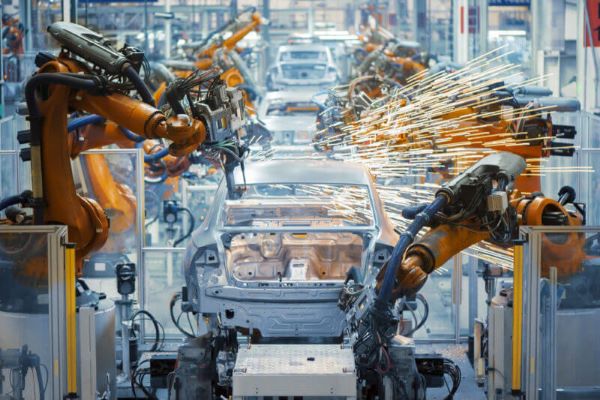Hazardous Waste Experts: What is Industrial Waste?
Nothing’s easy anymore. Not even throwing out the garbage. In fact, throwing out the garbage has become a minefield of rules, regulations, requirements, laws, and expectations that require expert advice—especially if you produce industrial amounts of the stuff.
There are generally three kinds of waste you need to confront as the owner and/or manager of an enterprise: municipal, industrial, and hazardous. This blog entry speaks to the differences between industrial waste and hazardous wastes.
Municipal solid waste
The most-benign of industrial detritus is what’s generally referred to as “municipal solid waste” by rubbish aficionados, and what the rest of the world calls “trash” or “garbage.”
This includes the kinds of stuff that garbage trucks routinely stop by and pick up in front of homes, schools, hospitals, and businesses, without drama. Think: product packaging, furniture, clothing, bottles, food scraps, newspapers, etc.
Hazardous wastes
Hazardous wastes are a complicated topic in and of themselves. See our last blog entry for a brief but comprehensive overview. But herein, suffice to say that something must be “listed,” “acutely hazardous,” or “characteristic” to be considered intrinsically hazardous waste. Otherwise, it’s probably an industrial waste or (less likely) a municipal one.
something must be “listed,” “acutely hazardous,” or “characteristic” to be considered intrinsically hazardous waste. Otherwise, it’s probably an industrial waste or (less likely) a municipal one.
Industrial wastes (aka manufacturing wastes)
That brings us to industrial wastes (aka manufacturing wastes—see sidebar), which include a potpourri of non-hazardous materials that are secondary to the production of goods and products. These are not hazardous wastes, which are those deemed to be endemically dangerous or harmful to human health or the environment.
As such, industrial wastes do not require hazardous waste management. But the danger, here, is that what often appears as nominally non-hazardous to the civilian population might nonetheless be deemed to need special handling by the EPA, OSHA, DOT, or some state or local bureaucracy. Consider:
The EPA definition of non-hazardous industrial waste is “waste generated from processes associated with the production of goods and products, such as electric power generation and manufacturing of materials such as pulp and paper, iron and steel, glass, and concrete.” (See sidebar.)
Although such materials are not an in-your-face threat to human health or the environment, you still can’t simply toss them into that dumpster out back. They might not require hazardous waste disposal, per se. But they still require some degree of prudent waste management.
For example, concrete is an industrial waste that doesn’t require hazardous waste management. (Junk removers advise to haul it to a construction & demolition waste facility,
give it to a local building supplies retailer, advertise it for free or sale online, or
hire a professional junk hauling company.)
But dust from grinding concrete requires special handling per something called OSHA Table I Compliance, which lists dicta about occupational exposures to “respirable crystalline silica in construction work.”
Typical advice here is that you place concrete dust in a multiple-ply fleece bag. These bags usually incorporate a multi-ply fabric design to manage air equilibrium while collecting 0.3 micron or larger dust particles. You can then take the bag and place it in a dumpster.
(If you don’t have a trove of multiple-ply fleece bags in that metal storage cabinet where you keep the print toner, we can help.)
Other industrial wastes that might or mightn’t require special handling are antifreeze, ash, grinding dusts, sludges, and/or liquids contaminated with non-hazardous chemicals.
As we’re fond of saying, it’s important to get expert advice.
Keep waste streams separate
Because not all industrial wastes are hazardous, it’s crucial to keep your waste streams separate. For instance, mixing a gallon of hazmat with a gallon of water gets you two gallons of hazmat and doubles the cost of your hazardous waste disposal (economies of scale notwithstanding).
And if the particular hazmat is reactive with water—or something else you inadvertently mix with it—you might create a waste that’s even more flammable, explosive, corrosive, or toxic than what you started with.
On the other hand, being overcautious—by treating too many wastes as hazardous when they’re not—is just as effective at spuriously increasing your hazardous waste management costs.
Like, did that case of stale marshmallows really need hazardous waste disposal? (N.B. Could be in California.)
The upshot
State and local governments often regulate non-hazardous waste, which is why it is important to get expert advice to ensure that you’re in compliance. As a waste generator, the onus is upon you to determine whether what you’re discarding is hazardous or non-hazardous in the eyes of the EPA, DOT, OSHA, and a gaggle of state or local authorities.
A reputable hazardous waste management provider—by assessing how you generate waste and the materials themselves—can help you distinguish between industrial wastes that require hazardous waste disposal and those that don’t, thus helping you to dispose of either kind quickly, efficiently, legally, and most cost-effectively.
This content was first posted on the Hazardous Waste Experts website.

